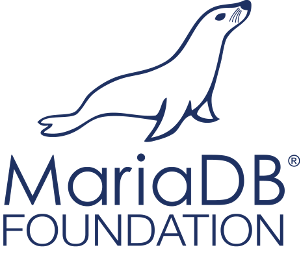2015 in the MariaDB Foundation
The mariadb.org website had over one million page views in 2015, a growth of about 9% since 2014. Good growth has been visible all over the MariaDB ecosystem and we can conclude that 2015 was a successful year for MariaDB.
Increased adoption
MariaDB was included for the first time in an official Debian release (version 8.0 “Jessie”) and there has been strong adoption of MariaDB 10.0 in Linux distributions that already shipped 5.5. MariaDB is now available from all major Linux distributions including SUSE, RedHat, Debian and Ubuntu.
Adoption of MariaDB in other platforms also increased, and MariaDB is now available as a database option on, among others, Amazon RDS, 1&1, Azure and Juju Charm Store (Ubuntu).
Active maintenance and active development
In 2015 there were 6 releases of the 5.5 series, 8 releases of the 10.0 series and 8 releases of the 10.1 series. The 10.1 series was announced for general availability in October 2015 with the release of 10.1.8. In addition, there were also multiple releases of MariaDB Galera Cluster, and the C, Java and OBDC connectors as well as many other MariaDB tools. The announcements for each release can be read on the Mariadb.org blog archives with further details in the Knowledge Base.
Some of the notable new features in 10.1 include:
- Galera clustering is now built-in instead of a separate server version, and can be activated with a simple configuration change.
- Traditional replication was also improved and is much faster in certain scenarios.
- Table, tablespace and log encryption were introduced.
- New security hardening features by default and authentication improvements.
- Improved support for for Spatial Reference systems for GIS data.
We are also proud that the release remains backwards compatible and it is easy to upgrade to 10.1 from any previous MariaDB or MySQL release.
10.1 was also a success in terms of collaboration and included major contributions from multiple companies and developers.
MariaDB events and talks
The main event organized by the MariaDB Foundation in the year was the MariaDB Developer Meetup in Amsterdam in October, at the Booking.com offices. It was a success with over 60 attendees
In addition there were about a dozen events in 2015 at which MariaDB Foundation staff spoke.
Staff, board and members
In 2015 the staff included:
- Otto Kekäläinen, CEO
- Michael “Monty” Widenius, Founder and core developer
- Andrea Spåre-Strachan, personal assistant to Mr Widenius
- Sergey Vojtovich, core developer
- Alexander Barkov, core developer
- Vicențiu Ciorbaru, developer
- Ian Gilfillan, documentation writer and webmaster
Our staffing will slightly increase as Vicențiu will start working full time in 2016 for the Foundation.
Our developers worked a lot on performance and scalability issues, ported the best features from new MySQL releases, improved MariaDB portability for platforms like ARM, AIX, IBM s390 and Power8, fixed security issues and other bugs. A lot of time was also invested in cleaning up the code base as the current 2,2 million lines of code includes quite a lot of legacy code in it. Version control and issue tracker statistics shows that the foundation staff made 528 commits, reported 373 bugs or issues and closed 424 bugs or other issues.
In total there were 2400 commits made by 91 contributors in 2015.
 The Board of Directors in 2015 consisted of:
The Board of Directors in 2015 consisted of:
- Chairman Rasmus Johansson, VP Engineering at MariaDB Corporation
- Michael “Monty” Widenius, Founder and CTO of MariaDB Corporation
- Jeremy Zawodny, Software Engineer at Craigslist
- Sergei Golubchik, Chief Architect at MariaDB Corporation
- Espen Håkonsen, CIO of Visma and Managing Director of Visma IT & Communications
- Eric Herman, Principal Developer at Booking.com
MariaDB Foundation CEO Otto Kekäläinen served as the secretary of the board.
In 2015 we welcomed as new major sponsors Booking.com, Visma, Verkkokauppa.com. Acronis just joined to be a member for 2016. Please check out the full list of supporters.
If you want to help the MariaDB Foundation in the mission to guarantee continuity and open collaboration, please support us as with individual or corporate sponsorship.
What will 2016 bring?
We expect steady growth in the adoption of MariaDB in 2016. There are many migrations from legacy database solutions underway, and as the world becomes increasingly digital, there are a ton of new software projects starting that use MariaDB to for their SQL and no-SQL data needs. In 2016 many will upgrade to 10.1 and the quickest ones will start using MariaDB 10.2 which is scheduled to be released some time during 2016. MariaDB also has a lot of plugins and storage engines that are getting more and more attention, and we expect more buzz around them when software developers figure out new ways to manage data in fast, secure and scalable ways.
Very good year. Looking forward to the next Developer conference.